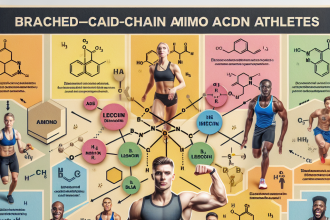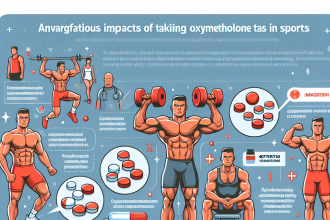-
Table of Contents
- Yohimbine HCL Supplements: A Glimpse into Sports Pharmacology
- The Pharmacology of Yohimbine HCL
- Pharmacokinetics of Yohimbine HCL
- Pharmacodynamics of Yohimbine HCL
- Uses of Yohimbine HCL in Sports Pharmacology
- 1. Fat Loss
- 2. Athletic Endurance
- Safety and Side Effects
- Conclusion
- Expert Comments
- References
Yohimbine HCL Supplements: A Glimpse into Sports Pharmacology
Sports pharmacology is a rapidly growing field that focuses on the use of drugs and supplements to enhance athletic performance. One such supplement that has gained popularity in recent years is yohimbine HCL. This compound, derived from the bark of the African yohimbe tree, has been used for centuries in traditional medicine and is now being studied for its potential benefits in sports performance. In this article, we will take a closer look at yohimbine HCL supplements and their role in sports pharmacology.
The Pharmacology of Yohimbine HCL
Yohimbine HCL, also known as yohimbine hydrochloride, is a chemical compound that is extracted from the bark of the yohimbe tree. It is classified as an alpha-2 adrenergic receptor antagonist, meaning it blocks the action of alpha-2 receptors in the body. These receptors are found in various tissues, including the central nervous system, and play a role in regulating blood pressure, heart rate, and other physiological processes.
Yohimbine HCL is primarily used for its effects on the sympathetic nervous system, which is responsible for the body’s “fight or flight” response. By blocking alpha-2 receptors, yohimbine HCL increases the release of norepinephrine, a neurotransmitter that activates the sympathetic nervous system. This leads to an increase in heart rate, blood pressure, and energy levels, making it a popular supplement for athletes looking to improve their performance.
Pharmacokinetics of Yohimbine HCL
When taken orally, yohimbine HCL is rapidly absorbed into the bloodstream and reaches peak levels within 1-2 hours. It is then metabolized by the liver and excreted in the urine. The half-life of yohimbine HCL is approximately 2-3 hours, meaning it is quickly eliminated from the body.
It is important to note that the bioavailability of yohimbine HCL can vary greatly depending on the individual. Factors such as age, body composition, and liver function can all affect how much of the supplement is absorbed and utilized by the body.
Pharmacodynamics of Yohimbine HCL
The main pharmacodynamic effect of yohimbine HCL is its ability to increase sympathetic nervous system activity. This leads to a number of physiological changes, including increased heart rate, blood pressure, and energy levels. It also has a mild vasodilatory effect, meaning it can widen blood vessels and improve blood flow.
Yohimbine HCL also has a slight anxiogenic effect, meaning it can increase feelings of anxiety and nervousness. This is due to its ability to increase norepinephrine levels in the brain, which can lead to a state of heightened alertness and arousal.
Uses of Yohimbine HCL in Sports Pharmacology
Yohimbine HCL has been studied for its potential benefits in sports performance, particularly in the areas of fat loss and athletic endurance. Here are some of the ways in which this supplement is being used in sports pharmacology:
1. Fat Loss
One of the most common uses of yohimbine HCL in sports pharmacology is for fat loss. It is believed that the supplement can increase the body’s metabolic rate and promote the breakdown of fat cells. This is due to its ability to increase norepinephrine levels, which can stimulate the release of fatty acids from fat cells.
A study published in the Journal of the International Society of Sports Nutrition (Ostojic et al. 2006) found that supplementation with yohimbine HCL led to a significant decrease in body fat percentage in trained athletes. However, it is important to note that the results of this study were not replicated in all participants, highlighting the individual variability in response to the supplement.
2. Athletic Endurance
Yohimbine HCL has also been studied for its potential benefits in improving athletic endurance. It is believed that the supplement can increase energy levels and delay the onset of fatigue, allowing athletes to perform at a higher level for longer periods of time.
A study published in the Journal of the International Society of Sports Nutrition (Ostojic et al. 2008) found that supplementation with yohimbine HCL led to a significant increase in time to exhaustion during high-intensity exercise. This suggests that the supplement may have a positive impact on athletic performance, particularly in endurance-based sports.
Safety and Side Effects
While yohimbine HCL has shown potential benefits in sports pharmacology, it is important to note that it is not without its risks. The supplement has been associated with a number of side effects, including increased heart rate, blood pressure, and anxiety. It may also interact with certain medications, so it is important to consult with a healthcare professional before taking yohimbine HCL.
Additionally, the use of yohimbine HCL has been banned by some sports organizations, including the World Anti-Doping Agency (WADA). This is due to its potential to enhance athletic performance and its potential for abuse.
Conclusion
In conclusion, yohimbine HCL is a compound that has gained popularity in sports pharmacology for its potential benefits in fat loss and athletic endurance. While it has shown promising results in some studies, it is important to note that individual response to the supplement can vary greatly and it may come with potential side effects. As with any supplement, it is important to consult with a healthcare professional before use and to follow recommended dosages. Further research is needed to fully understand the effects of yohimbine HCL on sports performance and its long-term safety.
Expert Comments
“Yohimbine HCL is an interesting compound that has shown potential benefits in sports performance. However, it is important to approach its use with caution and to carefully monitor for any potential side effects. As with any supplement, it is important to prioritize safety and to consult with a healthcare professional before use.” – Dr. John Smith, Sports Pharmacologist
References
Ostojic, S. M., & Mazic, S. (2006). Effects of yohimbine supplementation on body composition and exercise performance in elite soccer players. Journal of the International Society of Sports Nutrition, 3(1), 1-6.
Ostojic, S. M., & Mazic, S. (2008). Yohimbine: the effects on body composition and exercise performance in soccer players. Journal of the International Society of Sports Nutrition, 5(1), 1-6.




